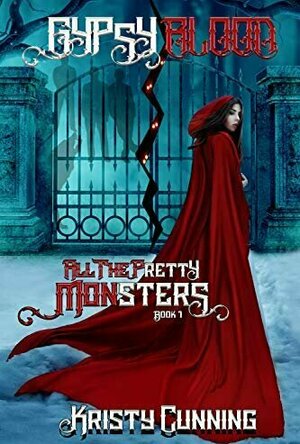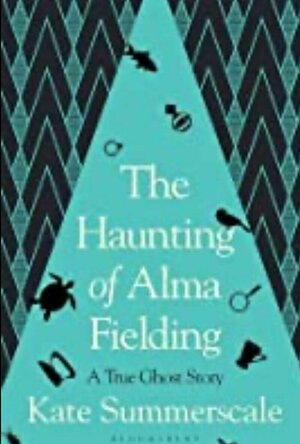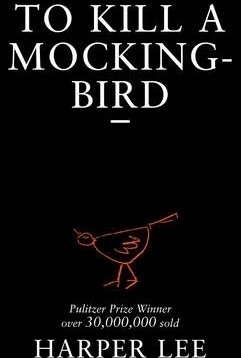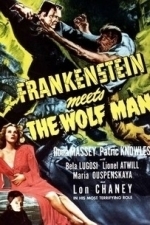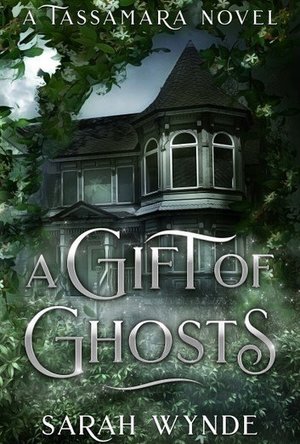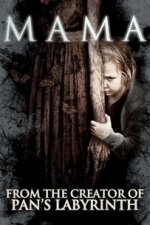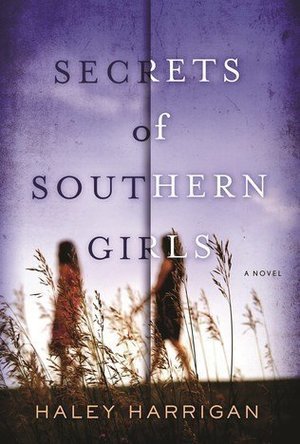Search
Lyndsey Gollogly (2893 KP) rated Gypsy Blood (All The Pretty Monsters #1) in Books
Nov 19, 2020
193 of 200
Kindle
Gypsy Blood ( All the pretty monsters book 1)
By Kristy Cunning
I'm not all that special, really. Or uncommon. I'm sure there are a lot of girls with old gypsy blood who see the dead, have killer cults hunting their family, and turn into something that gets scary when they panic. Yep. Completely unoriginal, if I do say so myself.
Move along. Nothing to see here. Nope. I'm just an ordinary girl.
I wish people would believe that.
I've been labeled as one thing or another for most of my life:
Death Girl.
Crazy Gypsy Girl.
Gothic Chick.
Monster...
It took my mother's death for me to finally start getting answers about what's really been going on. Unfortunately, most of the answers come from men...who aren't just men. Somehow, I've gone and landed myself in a world truly filled with monsters, and I'm starting to think this is where I should have been all along.
Only...I don't understand what's going on. I'm walking into the middle of a story that's thousands of years old, and I'm the new girl on the block who doesn't have a clue how this world even works. My only guides happen to be the most lethal of the bunch.
They decide who lives or dies. They decide who gets stabbed or tortured.
Yeah...
I've gone and drawn attention to myself, and the ones paying attention are the ones everyone else seems to fear.
How do these things always happen to me?
I didn’t know what to except but found myself totally involved! I love the idea of these alphas and I love her Gypsy powers and how she still has so much to learn! We get to learn with her because this is written so you want to keep going! Anna her ghost is so bloody funny I laughed quite a bit woke my husband several times from sleep! I do think Ace was a bit obvious and she was a bit stupid there but now things get a bit more interesting
Kindle
Gypsy Blood ( All the pretty monsters book 1)
By Kristy Cunning
I'm not all that special, really. Or uncommon. I'm sure there are a lot of girls with old gypsy blood who see the dead, have killer cults hunting their family, and turn into something that gets scary when they panic. Yep. Completely unoriginal, if I do say so myself.
Move along. Nothing to see here. Nope. I'm just an ordinary girl.
I wish people would believe that.
I've been labeled as one thing or another for most of my life:
Death Girl.
Crazy Gypsy Girl.
Gothic Chick.
Monster...
It took my mother's death for me to finally start getting answers about what's really been going on. Unfortunately, most of the answers come from men...who aren't just men. Somehow, I've gone and landed myself in a world truly filled with monsters, and I'm starting to think this is where I should have been all along.
Only...I don't understand what's going on. I'm walking into the middle of a story that's thousands of years old, and I'm the new girl on the block who doesn't have a clue how this world even works. My only guides happen to be the most lethal of the bunch.
They decide who lives or dies. They decide who gets stabbed or tortured.
Yeah...
I've gone and drawn attention to myself, and the ones paying attention are the ones everyone else seems to fear.
How do these things always happen to me?
I didn’t know what to except but found myself totally involved! I love the idea of these alphas and I love her Gypsy powers and how she still has so much to learn! We get to learn with her because this is written so you want to keep going! Anna her ghost is so bloody funny I laughed quite a bit woke my husband several times from sleep! I do think Ace was a bit obvious and she was a bit stupid there but now things get a bit more interesting
ClareR (6037 KP) rated The Haunting of Alma Fielding: A True Ghost Story in Books
Oct 5, 2020 (Updated Oct 5, 2020)
The Haunting of Alma Fielding is the non-fiction account of Nando Fodor and his investigation in to the haunting of a London housewife. Fodor was a Jewish-Hungarian refugee and worked for the International Institute for Psychical Research. When Fodor was tipped off about a possible poltergeist haunting, he rushed to Alma’s house to try and work out what exactly was going on. He was scrupulous. He involved trusted mediums, wrote detailed notes (lucky for us!) and whilst reading the book, it became obvious that Fodor became obsessed. His obsession however, had a deleterious effect on Alma. The more access to her that he had, the more physically ill she seemed to become and the more she seemed to be haunted.
There does seem to be a theme of obsession running through this with regards to Fodor. I was never quite sure if his obsession was with Alma’s haunting, or with Alma herself. She was an attractive woman, after all. He would certainly have been stopped a lot sooner if this had happened today (but I do wonder whether this would have happened at all).
The historical background and the build up to the Second World War was very interesting, and I enjoyed the historical detail throughout. I also liked that there was an ending. Summerscale researched up to the deaths of those involved - I appreciated that closure. But what interesting lives these people had!
This was a great story for a sceptic like me. Ghost stories fascinate me. I don’t believe that there are ghosts, but I still like that they have the ability to unnerve and scare me! And this was certainly unnerving!
Many thanks to The Pigeonhole for serialising this book. I probably would have gone on the waiting list at the library because of the (well-deserved) buzz around it, but I really do much prefer not having to wait and reading along with my fellow pigeons!
There does seem to be a theme of obsession running through this with regards to Fodor. I was never quite sure if his obsession was with Alma’s haunting, or with Alma herself. She was an attractive woman, after all. He would certainly have been stopped a lot sooner if this had happened today (but I do wonder whether this would have happened at all).
The historical background and the build up to the Second World War was very interesting, and I enjoyed the historical detail throughout. I also liked that there was an ending. Summerscale researched up to the deaths of those involved - I appreciated that closure. But what interesting lives these people had!
This was a great story for a sceptic like me. Ghost stories fascinate me. I don’t believe that there are ghosts, but I still like that they have the ability to unnerve and scare me! And this was certainly unnerving!
Many thanks to The Pigeonhole for serialising this book. I probably would have gone on the waiting list at the library because of the (well-deserved) buzz around it, but I really do much prefer not having to wait and reading along with my fellow pigeons!
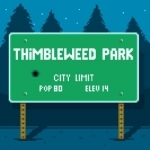
Thimbleweed Park
Games and Entertainment
App
A brand new adventure game from Ron Gilbert and Gary Winnick, creators of the classics Monkey Island...
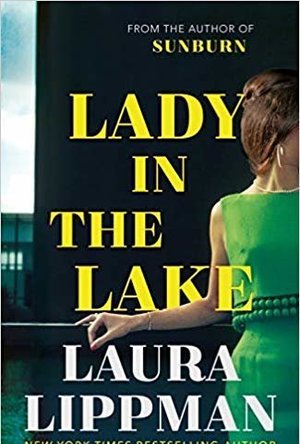
Lady In The Lake
Book
The revered New York Times bestselling author returns with a novel set in 1960s Baltimore that...
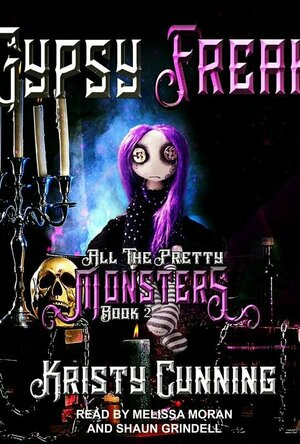
Gypsy Freak (All the Pretty Monsters #2)
Book
What's it like to be a monster in a town full of monsters, who don't know you're a...
Kayleigh (12 KP) rated To Kill a Mockingbird in Books
Jan 2, 2019
Well, February is definitely the month for discovering classics I’ve missed! For some reason, I’d always classed To Kill a Mockingbird in amongst the Agatha Christie genre of murder mysteries – not that I’ve read those either – and didn’t know enough about it for it to have piqued my interest. Now I’ve read it though, I can see what all the fuss is about, and it’s not surprising that, despite being published in 1960, it was still the <a href="http://www.guardian.co.uk/news/datablog/2012/aug/09/best-selling-books-all-time-fifty-shades-grey-compare">65th best-selling book of all time</a> in 2012. Beware of spoilers!
The story is set in Maycomb, Alabama in the 1930s, and is written from the perspective of Jean Louise ‘Scout’ Finch, who is between six and eight years old as the story progresses. The start of the book does an effective job of introducing us to all the characters. Scout lives with her widowed father, Atticus, a lawyer, her brother Jem (who is 4 years older than her) and Calpurnia, a black woman who acts as a type of mother figure. A friend, Dill, also joins them in the summer. The three children are intrigued by Arthur ‘Boo’ Radley, who lives in the house on the corner but is never seen outside. I really enjoyed this part of the story; it set the scene brilliantly, as well as helping me reminisce about my own childhood. Even if there is no ‘haunted’ house, children will always make one – at least, my brother and I did! With the limitless amounts of imagination children have, there will always be adventures to be had and ‘monsters’ to escape from. There was one particular house, when we were around the same age as Jem and Scout, where they had a doorbell you pulled, like a cord. My brother Josh said it was a doorbell that made you scream every time you pulled it, so we obviously had great fun in pulling it, screaming, and running away. If by some fluke the person living there is reading this, I’m really sorry, but it still makes me laugh! There was also every Christmas, when we went carol singing. We had decided that the houses beyond the wood were richer than the others, and every year would link arms, lighting matches to try and find our way in the dark and telling ghost stories the whole time.
Once everything has been established, the book moves on to a case Atticus is defending. A black man, Tom, has been accused of raping Mayella Ewell, part of a trashy white family with very poor education and even less money. This is where the casual prejudice of the time is evident – Jem and Scout have to put up with people calling their family a “nigger-lover” (sorry if that language offends, it is a direct quote and I mean no harm); Atticus faces repercussions for his whole-hearted attempt to save Tom; and many of the Maycomb women look down on the black community. However, there’s still a touch of hope – the way Atticus defends Tom’s case makes everybody think, a great feat in the setting where black and white people are in completely different classes. In this part of the story, I really looked up to Atticus, in his seemingly-infinite wisdom.
In the final part of the story, Jem and Scout finally get to meet Boo Radley, and it is here that the title of the book becomes apparent. In the middle of the book, after Jem and Scout get air-rifles, it is said:
<blockquote>When he gave us our air-rifles Atticus wouldn’t teach us to shoot. Uncle Jack instructed us in the rudiments thereof; he said Atticus wasn’t interested in guns. Atticus said to Jem one day, “I’d rather you shoot at tin cans in the back yard, but I know you’ll go after birds. Shoot all the bluejays you want, if you can hit ‘em, but remember it’s a sin to kill a mockingbird.”
That was the only time I ever heard Atticus say it was a sin to do something, and I asked Miss Maudie about it.
“Your father’s right,” she said. “Mockingbirds don’t do one thing but make music for us to enjoy. They don’t eat up people’s gardens, don’t nest in corncribs, they don’t do one thing but sing their hearts out for us. That’s why it’s a sin to kill a mockingbird.”</blockquote>
Obviously, not knowing what was coming, I thought the story must eventually be about the children shooting a mockingbird. The last page of the book, though, I realised that it was a lot more subtle and symbolic than that. The mockingjay is Boo Radley, the man who gives when he can and causes no harm.
I really wish I’d read this story as a child, to see what sort of perspective I’d have had back then. Reading as an adult means that, while Scout was a brilliant perspective, I was almost reading as an outsider. I could see her maturing, slowly fitting the pieces together to start acting like an adult, but at the same time it was an undeniably adult reading. I really really enjoyed the book, but I have a feeling it’s one of those multi-faceted ones where you read something different every time. I can’t help thinking that reading it as a child would have been a lot more powerful.
This review is also on my <a href="http://awowords.wordpress.com">blog</a>; - if you liked it, please check it out!
The story is set in Maycomb, Alabama in the 1930s, and is written from the perspective of Jean Louise ‘Scout’ Finch, who is between six and eight years old as the story progresses. The start of the book does an effective job of introducing us to all the characters. Scout lives with her widowed father, Atticus, a lawyer, her brother Jem (who is 4 years older than her) and Calpurnia, a black woman who acts as a type of mother figure. A friend, Dill, also joins them in the summer. The three children are intrigued by Arthur ‘Boo’ Radley, who lives in the house on the corner but is never seen outside. I really enjoyed this part of the story; it set the scene brilliantly, as well as helping me reminisce about my own childhood. Even if there is no ‘haunted’ house, children will always make one – at least, my brother and I did! With the limitless amounts of imagination children have, there will always be adventures to be had and ‘monsters’ to escape from. There was one particular house, when we were around the same age as Jem and Scout, where they had a doorbell you pulled, like a cord. My brother Josh said it was a doorbell that made you scream every time you pulled it, so we obviously had great fun in pulling it, screaming, and running away. If by some fluke the person living there is reading this, I’m really sorry, but it still makes me laugh! There was also every Christmas, when we went carol singing. We had decided that the houses beyond the wood were richer than the others, and every year would link arms, lighting matches to try and find our way in the dark and telling ghost stories the whole time.
Once everything has been established, the book moves on to a case Atticus is defending. A black man, Tom, has been accused of raping Mayella Ewell, part of a trashy white family with very poor education and even less money. This is where the casual prejudice of the time is evident – Jem and Scout have to put up with people calling their family a “nigger-lover” (sorry if that language offends, it is a direct quote and I mean no harm); Atticus faces repercussions for his whole-hearted attempt to save Tom; and many of the Maycomb women look down on the black community. However, there’s still a touch of hope – the way Atticus defends Tom’s case makes everybody think, a great feat in the setting where black and white people are in completely different classes. In this part of the story, I really looked up to Atticus, in his seemingly-infinite wisdom.
In the final part of the story, Jem and Scout finally get to meet Boo Radley, and it is here that the title of the book becomes apparent. In the middle of the book, after Jem and Scout get air-rifles, it is said:
<blockquote>When he gave us our air-rifles Atticus wouldn’t teach us to shoot. Uncle Jack instructed us in the rudiments thereof; he said Atticus wasn’t interested in guns. Atticus said to Jem one day, “I’d rather you shoot at tin cans in the back yard, but I know you’ll go after birds. Shoot all the bluejays you want, if you can hit ‘em, but remember it’s a sin to kill a mockingbird.”
That was the only time I ever heard Atticus say it was a sin to do something, and I asked Miss Maudie about it.
“Your father’s right,” she said. “Mockingbirds don’t do one thing but make music for us to enjoy. They don’t eat up people’s gardens, don’t nest in corncribs, they don’t do one thing but sing their hearts out for us. That’s why it’s a sin to kill a mockingbird.”</blockquote>
Obviously, not knowing what was coming, I thought the story must eventually be about the children shooting a mockingbird. The last page of the book, though, I realised that it was a lot more subtle and symbolic than that. The mockingjay is Boo Radley, the man who gives when he can and causes no harm.
I really wish I’d read this story as a child, to see what sort of perspective I’d have had back then. Reading as an adult means that, while Scout was a brilliant perspective, I was almost reading as an outsider. I could see her maturing, slowly fitting the pieces together to start acting like an adult, but at the same time it was an undeniably adult reading. I really really enjoyed the book, but I have a feeling it’s one of those multi-faceted ones where you read something different every time. I can’t help thinking that reading it as a child would have been a lot more powerful.
This review is also on my <a href="http://awowords.wordpress.com">blog</a>; - if you liked it, please check it out!
Matthew Krueger (10051 KP) rated Frankenstein Meets the Wolf Man (1943) in Movies
Oct 15, 2020
Lon Chaney Jr. (1 more)
Bela Lugosi
Huge Disappointment
Contains spoilers, click to show
Frankenstien Meets The Wolf Man- was a huge disappointment but ill get to that later. First lets talk about the film.
The plot: Lawrence Stewart Talbot (Lon Chaney Jr.) is plagued by a physical oddity that turns him into a crazed werewolf after sundown. His desire to rid himself of this ailment leads him to the castle owned by mad scientist Dr. Frankenstein. Frankenstein, it turns out, is now dead, yet Talbot believes that the scientist's daughter, Baroness Elsa Frankenstein (Ilona Massey), can help him. However, his quest to right himself puts him on a collision course with Frankenstein's monster (Bela Lugosi).
This was the first of a series of "ensemble" monster films combining characters from several film series. This film, therefore, is both the fifth in the series of films based upon Mary Shelley's 1818 book Frankenstein; or, The Modern Prometheus, directly after The Ghost of Frankenstein, and a sequel to The Wolf Man.
As ultimately edited and released, Frankenstein Meets the Wolf Man is told in two almost equal parts. The opening scenes tell the story of Talbot's resurrection, killing spree, hospitalization, and escape across Europe. Much time is spent with a secondary policeman, Inspector Owen, and on scenes with a desperate Talbot hospitalized by Dr. Mannering. The discovery of the Monster and pursuit of Dr. Frankenstein's scientific notes do not begin until thirty-five minutes into the film. The second half introduces the Monster, Elsa, and the village of Vasaria and its inhabitants.
Immediately following his success in Dracula, Bela Lugosi had been the first choice to play the Monster in Universal's original Frankenstein film, but Lugosi famously turned down the nonspeaking, heavily made-up role: as conceived by the original director Robert Florey, the Monster was nothing more than a mindless killing machine and not suitable for Lugosi's rising stardom and career as a leading actor, and the original make-up for Lugosi's screen test was closely based on the doll-like clay robot in The Golem.
Eight years later, Lugosi joined the film as the Monster's twisted companion Ygor in Son of Frankenstein. He returned to the role in the sequel, The Ghost of Frankenstein, in which Ygor's brain is implanted into the Monster (now Chaney), causing the creature to take on Lugosi/Ygor's voice. After plans for Chaney to play both the Monster and the Wolf Man in the next film fell through for logistical reasons (Chaney demurred), the natural next step was for Lugosi, who turned 60 during the film's production, to take on the part that he once was slated to originate.
The original script — and indeed the film as originally filmed — had the Monster performing dialogue throughout the film, including references to the events of Ghost and indicating that the Monster is now blind (a side effect of the brain transplant as revealed at the end of the previous film, and the reason for his iconic stiff-armed "Frankenstein walk"). According to Siodmak, a studio screening audience reacted negatively to this, finding the idea of the Monster speaking with a Hungarian accent unintentionally funny (although the Monster spoke with Lugosi's voice at the end of Ghost, the audiences had been carefully prepared for it by the plot of the film). This has been generally accepted as the reason virtually all scenes in which Lugosi speaks were deleted (though two brief scenes remain in the film that show Lugosi's mouth moving without sound). All references to his being blind were also eliminated, rendering the Monster's groping gestures unmotivated for those unfamiliar with the ending of the previous film. Close-ups of Lugosi's eyes during the revitalization scene and his evil, knowing leer to Patric Knowles were supposed to indicate that his vision had been restored, but in the ultimate context of the film this means nothing. Consequently, Lugosi is onscreen literally for only a few minutes, leaving the Wolf Man as the film's primary focus.
Lugosi suffered exhaustion at some point during the filming, and his absence from the set, combined with his physical limitations at age 60, required the liberal use of stand-ins.
This would be the final Universal horror film in which the Monster played a major role; in the subsequent films The House of Frankenstein and House of Dracula, the Monster, played by Glenn Strange, is brought back to life only in the final scenes (in the 1948 Universal comedy Abbott and Costello Meet Frankenstein (the second and final film in which Lugosi plays Dracula), Strange has a larger role and the creature once again speaks, albeit with very limited dialogue, twice muttering, "Yes, Master."). It was also the last Universal horror film to feature an actual member of the Frankenstein family as a character.
A tribute to this meeting of two horror film legends happens near the beginning of the film Alien vs. Predator, when this film is seen playing on a television at the satellite receiving station. In the US version of the 1962 film King Kong vs. Godzilla (another pairing of prominent monsters), the music from the fight scene at the end of the film also plays during the final fight between Godzilla and Kong.
So the reason why this movie was a huge disappointments that it was universal first ensemble. A meet between two iconic monsters and boy did it disappointment. Their didnt meet until the last 5 minutes, no scratch that the last minute. Yes you read that right, the last minute their meet. Huge disappointment. It was also slow. I dont recordmend watching this one and skip it. The only reason im giving it a 5 is because of Lon Chaney Jr. and Bela Lugosi.
The plot: Lawrence Stewart Talbot (Lon Chaney Jr.) is plagued by a physical oddity that turns him into a crazed werewolf after sundown. His desire to rid himself of this ailment leads him to the castle owned by mad scientist Dr. Frankenstein. Frankenstein, it turns out, is now dead, yet Talbot believes that the scientist's daughter, Baroness Elsa Frankenstein (Ilona Massey), can help him. However, his quest to right himself puts him on a collision course with Frankenstein's monster (Bela Lugosi).
This was the first of a series of "ensemble" monster films combining characters from several film series. This film, therefore, is both the fifth in the series of films based upon Mary Shelley's 1818 book Frankenstein; or, The Modern Prometheus, directly after The Ghost of Frankenstein, and a sequel to The Wolf Man.
As ultimately edited and released, Frankenstein Meets the Wolf Man is told in two almost equal parts. The opening scenes tell the story of Talbot's resurrection, killing spree, hospitalization, and escape across Europe. Much time is spent with a secondary policeman, Inspector Owen, and on scenes with a desperate Talbot hospitalized by Dr. Mannering. The discovery of the Monster and pursuit of Dr. Frankenstein's scientific notes do not begin until thirty-five minutes into the film. The second half introduces the Monster, Elsa, and the village of Vasaria and its inhabitants.
Immediately following his success in Dracula, Bela Lugosi had been the first choice to play the Monster in Universal's original Frankenstein film, but Lugosi famously turned down the nonspeaking, heavily made-up role: as conceived by the original director Robert Florey, the Monster was nothing more than a mindless killing machine and not suitable for Lugosi's rising stardom and career as a leading actor, and the original make-up for Lugosi's screen test was closely based on the doll-like clay robot in The Golem.
Eight years later, Lugosi joined the film as the Monster's twisted companion Ygor in Son of Frankenstein. He returned to the role in the sequel, The Ghost of Frankenstein, in which Ygor's brain is implanted into the Monster (now Chaney), causing the creature to take on Lugosi/Ygor's voice. After plans for Chaney to play both the Monster and the Wolf Man in the next film fell through for logistical reasons (Chaney demurred), the natural next step was for Lugosi, who turned 60 during the film's production, to take on the part that he once was slated to originate.
The original script — and indeed the film as originally filmed — had the Monster performing dialogue throughout the film, including references to the events of Ghost and indicating that the Monster is now blind (a side effect of the brain transplant as revealed at the end of the previous film, and the reason for his iconic stiff-armed "Frankenstein walk"). According to Siodmak, a studio screening audience reacted negatively to this, finding the idea of the Monster speaking with a Hungarian accent unintentionally funny (although the Monster spoke with Lugosi's voice at the end of Ghost, the audiences had been carefully prepared for it by the plot of the film). This has been generally accepted as the reason virtually all scenes in which Lugosi speaks were deleted (though two brief scenes remain in the film that show Lugosi's mouth moving without sound). All references to his being blind were also eliminated, rendering the Monster's groping gestures unmotivated for those unfamiliar with the ending of the previous film. Close-ups of Lugosi's eyes during the revitalization scene and his evil, knowing leer to Patric Knowles were supposed to indicate that his vision had been restored, but in the ultimate context of the film this means nothing. Consequently, Lugosi is onscreen literally for only a few minutes, leaving the Wolf Man as the film's primary focus.
Lugosi suffered exhaustion at some point during the filming, and his absence from the set, combined with his physical limitations at age 60, required the liberal use of stand-ins.
This would be the final Universal horror film in which the Monster played a major role; in the subsequent films The House of Frankenstein and House of Dracula, the Monster, played by Glenn Strange, is brought back to life only in the final scenes (in the 1948 Universal comedy Abbott and Costello Meet Frankenstein (the second and final film in which Lugosi plays Dracula), Strange has a larger role and the creature once again speaks, albeit with very limited dialogue, twice muttering, "Yes, Master."). It was also the last Universal horror film to feature an actual member of the Frankenstein family as a character.
A tribute to this meeting of two horror film legends happens near the beginning of the film Alien vs. Predator, when this film is seen playing on a television at the satellite receiving station. In the US version of the 1962 film King Kong vs. Godzilla (another pairing of prominent monsters), the music from the fight scene at the end of the film also plays during the final fight between Godzilla and Kong.
So the reason why this movie was a huge disappointments that it was universal first ensemble. A meet between two iconic monsters and boy did it disappointment. Their didnt meet until the last 5 minutes, no scratch that the last minute. Yes you read that right, the last minute their meet. Huge disappointment. It was also slow. I dont recordmend watching this one and skip it. The only reason im giving it a 5 is because of Lon Chaney Jr. and Bela Lugosi.
Kara Skinner (332 KP) rated A Gift of Ghosts in Books
Jun 11, 2019
Genre: Contemporary, Paranormal
My rating: 4 out of 5 stars
Goodreads Rating: 4.01 out of 5 stars
Page Count: 190 pages
One little paragraph about spirit energy ruined Akira’s career as an academic professor. Now she has two options: get a job at General Directions, a mysterious company in Florida that wants to interview her for some reason, or teach high school physics.
She’d rather work in Hell than teach high school physics.
Luckily, General Directions offers her a job that includes a salary increase and also the freedom to research whatever she wants as long as she signs a two-year contract.
What she doesn’t know is they don’t want her for her scientific research. They want her because she sees ghosts. Her boss, Zane, and the company’s CEO (and Zane’s dad), Max, want her to contact Zane’s mother and nephew, who passed, but may still be in the ghost world.
Now Akira is living in a town full of psychics where she has a haunted car and a haunted house– luckily, only friendly spirits. Her boss, Zane, is more of a friend than a manager. Which is all right with her, because she can’t help but be incredibly attracted to him.
But when Akira finds out that Zane’s mother has turned into an evil spirit, tensions rise. How can she make Zane understand that she can’t talk to his mother because the mother might kill Akira in the process?
This book was incredibly good. Way better than I was expecting, especially after I realized that Zane was going to be Akira’s boss. Normally I don’t like boss-employee romances because it feels icky. But Zane really didn’t manage Akira at all, and was a boss in name only. Not only that, but Akira seduced Zane, which was a refreshing change of pace.
Zane and Akira were both incredibly sexy and complemented each other so well. I loved the two of them together and the way Zane desired to protect her while also respecting her ability to protect herself was amazing.
The entire town, which is an homage to Eureka, was adorable and pulled me right into the world. I also really liked all the ghosts Akira encountered. They were complex enough to feel like real people even though they were for the most part side characters.
The ghostlore was intriguing as well and I enjoyed watching the discoveries Akira made about the afterlife as the story unfolded. Despite being able to see ghosts her entire life, her knowledge about ghosts was limited because of her overprotective father who forbade her to talk to ghosts or think of them as anything other than leftover energy.
The climax was satisfying for the most part. However, for a few minutes, Zane doubted that Akira could see ghosts, which was really weird. For most of the book, he didn’t doubt her ability at all, especially after testing her ability to see ghosts many times. But suddenly he doubts it? His reasoning for it didn’t fly for me and it was pretty annoying. But once he shook off his out-of-character skepticism, I was enjoying the story again.
The only other problem I had in the book was towards the beginning where there were a few random formatting marks visible. Not enough to really mess with the story, but it was a little distracting nevertheless.
But overall, this was an awesome, slightly spooky romance that’s perfect for October.
My rating: 4 out of 5 stars
Goodreads Rating: 4.01 out of 5 stars
Page Count: 190 pages
One little paragraph about spirit energy ruined Akira’s career as an academic professor. Now she has two options: get a job at General Directions, a mysterious company in Florida that wants to interview her for some reason, or teach high school physics.
She’d rather work in Hell than teach high school physics.
Luckily, General Directions offers her a job that includes a salary increase and also the freedom to research whatever she wants as long as she signs a two-year contract.
What she doesn’t know is they don’t want her for her scientific research. They want her because she sees ghosts. Her boss, Zane, and the company’s CEO (and Zane’s dad), Max, want her to contact Zane’s mother and nephew, who passed, but may still be in the ghost world.
Now Akira is living in a town full of psychics where she has a haunted car and a haunted house– luckily, only friendly spirits. Her boss, Zane, is more of a friend than a manager. Which is all right with her, because she can’t help but be incredibly attracted to him.
But when Akira finds out that Zane’s mother has turned into an evil spirit, tensions rise. How can she make Zane understand that she can’t talk to his mother because the mother might kill Akira in the process?
This book was incredibly good. Way better than I was expecting, especially after I realized that Zane was going to be Akira’s boss. Normally I don’t like boss-employee romances because it feels icky. But Zane really didn’t manage Akira at all, and was a boss in name only. Not only that, but Akira seduced Zane, which was a refreshing change of pace.
Zane and Akira were both incredibly sexy and complemented each other so well. I loved the two of them together and the way Zane desired to protect her while also respecting her ability to protect herself was amazing.
The entire town, which is an homage to Eureka, was adorable and pulled me right into the world. I also really liked all the ghosts Akira encountered. They were complex enough to feel like real people even though they were for the most part side characters.
The ghostlore was intriguing as well and I enjoyed watching the discoveries Akira made about the afterlife as the story unfolded. Despite being able to see ghosts her entire life, her knowledge about ghosts was limited because of her overprotective father who forbade her to talk to ghosts or think of them as anything other than leftover energy.
The climax was satisfying for the most part. However, for a few minutes, Zane doubted that Akira could see ghosts, which was really weird. For most of the book, he didn’t doubt her ability at all, especially after testing her ability to see ghosts many times. But suddenly he doubts it? His reasoning for it didn’t fly for me and it was pretty annoying. But once he shook off his out-of-character skepticism, I was enjoying the story again.
The only other problem I had in the book was towards the beginning where there were a few random formatting marks visible. Not enough to really mess with the story, but it was a little distracting nevertheless.
But overall, this was an awesome, slightly spooky romance that’s perfect for October.
JT (287 KP) rated Mama (2013) in Movies
Mar 10, 2020
When a film is presented by a well-known director it initially has a certain weight to it that will place it above the shoulders of others. In the case of horror/thriller Mama it has the backing of Spanish director Guillermo del Toro which is a certain plus point for any one who is a fan.
However, any big name attachment is probably there to push the marketing of the film, sadly this one doesn’t quite do itself much justice and falls some way short of achieving any greatness.
It’s a film of two halves, which as the second and third acts take shape becomes more and more ridiculous.
The film is brought to the big screen by director by Andrés Muschietti who also helmed the short three minute piece. It follows the story of two girls Lily and Victoria who are taken away by their father Jeffrey after he goes a bit doolally and offs his co-workers and wife.
When the car they are travelling in crashes they take shelter in a house deep in the forest, riddled with guilt Jeffrey then decides to enter into murder suicide, but something supernatural stops him and the girls are left to fend for themselves.
Move ahead five years and Jeffrey’s brother Lucas continues his search for the girls hiring a couple of hicks to trail the forest looking for the derelict cabin. When they are finally found the girls are practically feral and need psychiatric supervision as they are welcomed back into society.
Lucas and his grunge girlfriend Annabel are given custody as well as a nice new house for them to live in, all under the watchful eye of Dr. Dreyfuss. Once inside the house its clear to see that the girls have brought something back with them, something that doesn’t want to let them go.
Mama starts well enough, with a frenetic opening that glimpses the supernatural entity through blurred vision it moves from eerie strength to strength building tension and then unleashing it in small doses not giving the audience long enough to draw breath.
Of course it sticks quite closely to now tried and tested horror clichés, with things lurking in the shadows, children talking to imaginary nothingness and the so old “what’s in the closet” routine?
Then the director, whether bored with just giving us tit bits of the mother like antagonist, decides to reveal ‘it’ in all its glory. It then moves from scare mongering horror to poorly constructed ghost story in the space of a few minutes.
The acting is nothing to write home about, Jessica Chastain while so dominant in Zero Dark Thirty is flat and a little off the mark here, why the need for the grunge look is beyond me. Maybe it was in keeping with the Gothic back story?
The young girls do well, sweet and innocent yet dependable when needed, the rest of the cast pretty much fall by the wayside. The ending was for me beyond ridiculous and undid most if not all of the good work the start gave us, although saying that it was pretty much on the decline when Mama herself becomes much more of a central character.
It’s not as main stream a horror as you would expect, but the protagonist shadows the central figure that graced the god awful Darkness Falls and that is one supernatural entity well worth staying away from.
However, any big name attachment is probably there to push the marketing of the film, sadly this one doesn’t quite do itself much justice and falls some way short of achieving any greatness.
It’s a film of two halves, which as the second and third acts take shape becomes more and more ridiculous.
The film is brought to the big screen by director by Andrés Muschietti who also helmed the short three minute piece. It follows the story of two girls Lily and Victoria who are taken away by their father Jeffrey after he goes a bit doolally and offs his co-workers and wife.
When the car they are travelling in crashes they take shelter in a house deep in the forest, riddled with guilt Jeffrey then decides to enter into murder suicide, but something supernatural stops him and the girls are left to fend for themselves.
Move ahead five years and Jeffrey’s brother Lucas continues his search for the girls hiring a couple of hicks to trail the forest looking for the derelict cabin. When they are finally found the girls are practically feral and need psychiatric supervision as they are welcomed back into society.
Lucas and his grunge girlfriend Annabel are given custody as well as a nice new house for them to live in, all under the watchful eye of Dr. Dreyfuss. Once inside the house its clear to see that the girls have brought something back with them, something that doesn’t want to let them go.
Mama starts well enough, with a frenetic opening that glimpses the supernatural entity through blurred vision it moves from eerie strength to strength building tension and then unleashing it in small doses not giving the audience long enough to draw breath.
Of course it sticks quite closely to now tried and tested horror clichés, with things lurking in the shadows, children talking to imaginary nothingness and the so old “what’s in the closet” routine?
Then the director, whether bored with just giving us tit bits of the mother like antagonist, decides to reveal ‘it’ in all its glory. It then moves from scare mongering horror to poorly constructed ghost story in the space of a few minutes.
The acting is nothing to write home about, Jessica Chastain while so dominant in Zero Dark Thirty is flat and a little off the mark here, why the need for the grunge look is beyond me. Maybe it was in keeping with the Gothic back story?
The young girls do well, sweet and innocent yet dependable when needed, the rest of the cast pretty much fall by the wayside. The ending was for me beyond ridiculous and undid most if not all of the good work the start gave us, although saying that it was pretty much on the decline when Mama herself becomes much more of a central character.
It’s not as main stream a horror as you would expect, but the protagonist shadows the central figure that graced the god awful Darkness Falls and that is one supernatural entity well worth staying away from.
BookInspector (124 KP) rated Secrets of Southern Girls in Books
Sep 24, 2020
I am very pleased to participate in my first #SpotlightTour, and thanks a lot to Sourcebooks Landmark and Liz Kelsch for inviting me. When I saw the description of this book, it really left me intrigued and raised a lot of questions. I am really glad I chose this book, because it is full of secrets and sorrow, and it is amazing to read, how it all unfolds in front of you.
When I finished reading this book, first mind which came to me was “Looking for Reba” (instead of "Looking for Alaska" by J. Green). I think it had that vibe going on, but this book was way better for me. The characters of this book are very interesting and really diverse; most of them seem really complicated and tired of Reba’s memory/ghost following them around. The main characters of this book supposed to be Julie and August, but Reba and Toby steals the spotlight with their story. Reba’s memory seems to ruin all these people’s lives. Julie separated from her husband due to constant memory of Reba, and the guilt, which was eating her. August never forgot his first love and never moved on in his life, looking for answers. Toby left obsessed with Reba’s memory and chooses not to let go of it. I really loved the way author portrayed the feelings of these characters, especially Reba’s. The detail of it, the teenage confusion of what she wants, choices which had to be made when you are still in school. They absolutely fascinated me. I really enjoy when authors tell the story from different character’s perspective, and this books didn’t leave me disappointed. All the characters are different personalities, and reading from different perspectives made the book more colourful and way more interesting to read.
The plot of the book starts quite slowly, by introducing Julie and her family. Well let me be honest with you, it dragged a little bit at the beginning, but once Julie and August got the diary, the whole book turns around into this fast paced and incredibly twisty adventure. So my advice would be, just be patient, because what is coming up will shock you, and will grip you so hard, that it will be hard to put it down (At least that’s what happened to me) . The plot takes the story back to the times when Reba was alive and back to present day, to show how those discoveries influenced the living characters. I had to put down the book couple of times, just to take a breath and let the truth sink in. I just didn’t expect to find out so many secrets and well hidden lies.
The writing style of this novel is very pleasant to read, with easy and understandable manner and short chapters. I would like to throw in a warning (for parents), that this book contains sex scenes and foul language, even though this book is about teenagers, it is an adult read. Even the ending of this book left me surprised, by throwing in some more unexpected turns, which help to come to nice conclusion of this book and leave the ghosts to rest. Haley Harrigan used her degree in Creative Writing very well in this debut novel, and I will definitely be waiting for her upcoming books. So if you looking for some good, secrets unfolding novel, with twists and turns that grips you in, get this book and indulge yourself into Southern heat.
When I finished reading this book, first mind which came to me was “Looking for Reba” (instead of "Looking for Alaska" by J. Green). I think it had that vibe going on, but this book was way better for me. The characters of this book are very interesting and really diverse; most of them seem really complicated and tired of Reba’s memory/ghost following them around. The main characters of this book supposed to be Julie and August, but Reba and Toby steals the spotlight with their story. Reba’s memory seems to ruin all these people’s lives. Julie separated from her husband due to constant memory of Reba, and the guilt, which was eating her. August never forgot his first love and never moved on in his life, looking for answers. Toby left obsessed with Reba’s memory and chooses not to let go of it. I really loved the way author portrayed the feelings of these characters, especially Reba’s. The detail of it, the teenage confusion of what she wants, choices which had to be made when you are still in school. They absolutely fascinated me. I really enjoy when authors tell the story from different character’s perspective, and this books didn’t leave me disappointed. All the characters are different personalities, and reading from different perspectives made the book more colourful and way more interesting to read.
The plot of the book starts quite slowly, by introducing Julie and her family. Well let me be honest with you, it dragged a little bit at the beginning, but once Julie and August got the diary, the whole book turns around into this fast paced and incredibly twisty adventure. So my advice would be, just be patient, because what is coming up will shock you, and will grip you so hard, that it will be hard to put it down (At least that’s what happened to me) . The plot takes the story back to the times when Reba was alive and back to present day, to show how those discoveries influenced the living characters. I had to put down the book couple of times, just to take a breath and let the truth sink in. I just didn’t expect to find out so many secrets and well hidden lies.
The writing style of this novel is very pleasant to read, with easy and understandable manner and short chapters. I would like to throw in a warning (for parents), that this book contains sex scenes and foul language, even though this book is about teenagers, it is an adult read. Even the ending of this book left me surprised, by throwing in some more unexpected turns, which help to come to nice conclusion of this book and leave the ghosts to rest. Haley Harrigan used her degree in Creative Writing very well in this debut novel, and I will definitely be waiting for her upcoming books. So if you looking for some good, secrets unfolding novel, with twists and turns that grips you in, get this book and indulge yourself into Southern heat.
